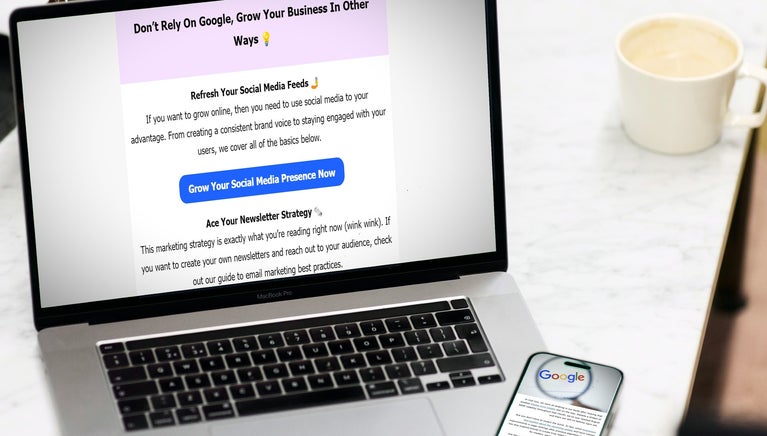Your Business Should Never Use Emojis – True or False?
We may receive a commission from our partners if you click on a link and purchase a product or service on their website. Learn more

Although online culture and trends are constantly evolving, one thing that has stayed consistent is the use of emojis. When sending email newsletters, posting blog articles, or using social media as a business, emojis are an effective way to grab user attention and enhance your brand personality.
Still, there are risks that come with using emojis as a business. If you choose the wrong selection or use them in the wrong way, you can risk losing credibility and professionalism.
To avoid any mishaps, I’ve put together some simple guidance on when to use emojis and when they’re best left behind.
When To Use Emojis
When used correctly, emojis can have a huge impact on your email marketing and social media strategies. Here are the key situations I recommend using emojis in:
To Break Up Large Chunks of Text
If you’re looking to make large paragraphs more digestible, emojis may be the answer. Not only do they make text easier to read, but also add a pop of color and fun to make the content more engaging.

Alongside Calls To Action
Online platforms often don’t support bolding and italics, so emojis are an effective way to pull information out the page. Directional emojis, such as arrows and pointing fingers, help direct users’ attention to important calls to action (CTAs). Similarly, sirens, alerts, and megaphones increase urgency and drive users to take action.
For example:
- “Click the link below 👇🏼”
- “➡️Subscribe to our newsletter here”
- 💥SAVE 10% HERE💥
To Enhance Brand Personality
Your business’s tone of voice can be amplified hugely with the right emojis.
For instance, businesses with a fun nature can be experimental with emojis, such as 🥳or 🍾, whereas a more serious business would benefit from using professional emojis, such as 📊 or 🎯.
In Email Subject Lines
To convince subscribers to open your emails, you need to hook them from the get-go. According to our guide to writing email subject lines, emojis can increase email click through rate by up to 56%.
Adding emojis to subject lines instantly gives a visual teaser as to the context of your email. I recommend finding bright colored, easily recognizable emojis that accurately represent your subject line’s context.
Some of my favorite examples from our newsletter include:
- “🚨 Google alert! SERPs volatility in May”
- “📵 will TikTok secure another lifeline? let’s see…”
- “💁 these 4 social tips are outdated – drop them”
When Not To Use Emojis
Although emojis can serve as an engaging content element to enhance your brand voice, you should be intentional with the choice and placement of your emojis, since it’s easy to cross the line. Here are times when I recommend avoiding them:
In Place of Words
Replacing words with their corresponding emoji is a big no-go. Firstly, it heightens the chance of your posts being misinterpreted – what may be obvious to you might not be so clear to another user.
Secondly, removing words is extremely bad for social media SEO – and SEO in general – since it will make it harder for the platform to understand what your posts are about and which users to show it to. Instead, use an emoji to complement, rather than replace a word.
- ❌“Here’s how I baked this🥧”
- ✔️“Here’s how I baked this blueberry pie🥧”
Top Tip 💡
Emoji meanings shift over time and between different generations, so it’s important to understand this context to avoid misusing them.For instance, the crying emoji (😭) is increasingly being used in place of the cry-laughing emoji (😂). Similarly, the praying emoji (🙏🏼) is often perceived as a high-five.
In Serious Announcements and Informational Content
The main purpose of emojis is to inject personality and color into your text. Understandably, this can have a negative impact on serious professional posts, such as a policy change or announcement.
You should also leave emojis behind on informative website pages and any public statements on social and political issues. If you’re unsure where the line is, it’s best to play it safe and avoid!
Be Confident Using Emojis
Emojis still have a place in 2025, and businesses that use them correctly could see a higher click through rate and encourage user engagement.
If you do decide to use emojis, be sure you know their current meaning to your audience and that they align with your brand and the specific topic of your post.





Leave a comment